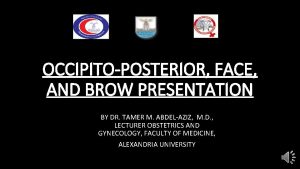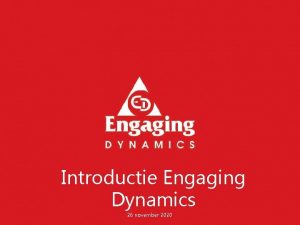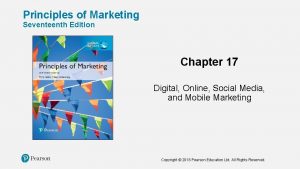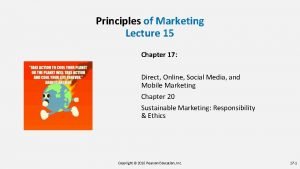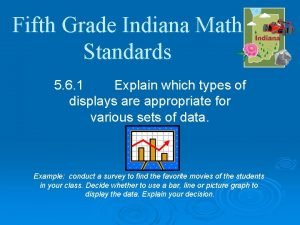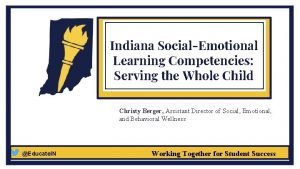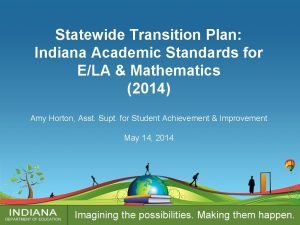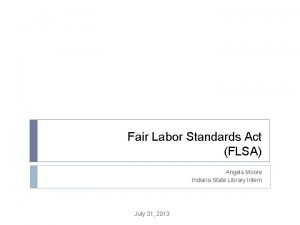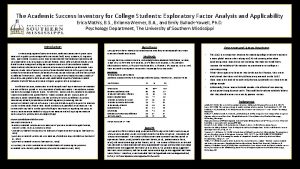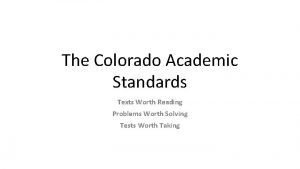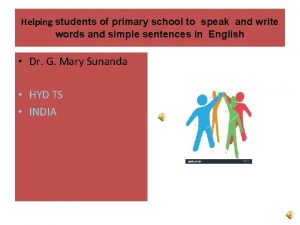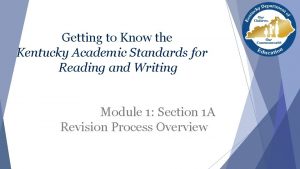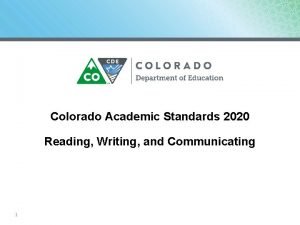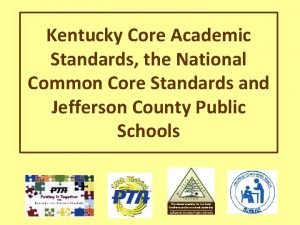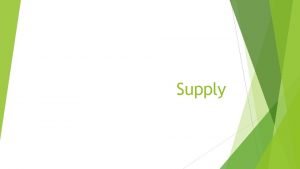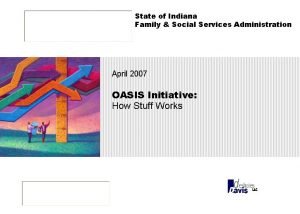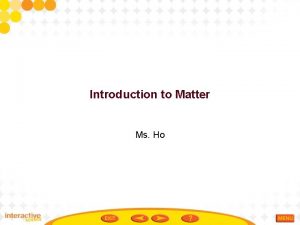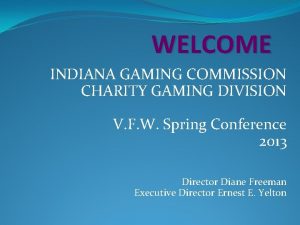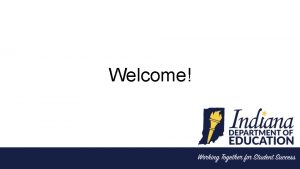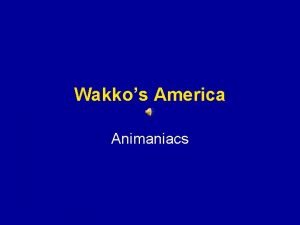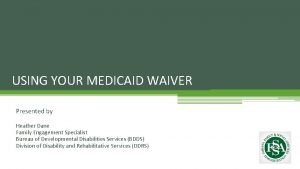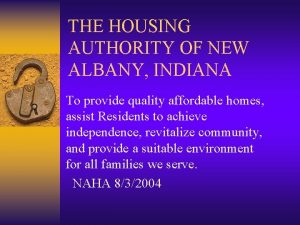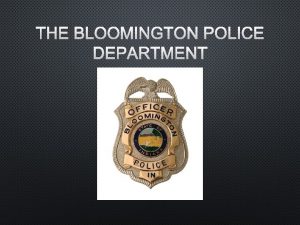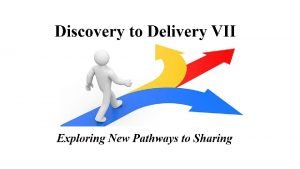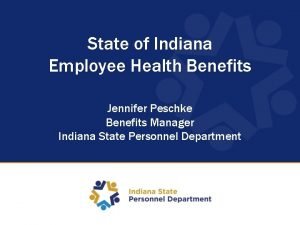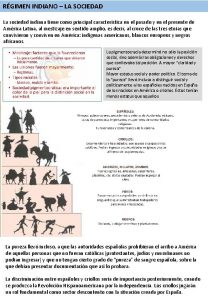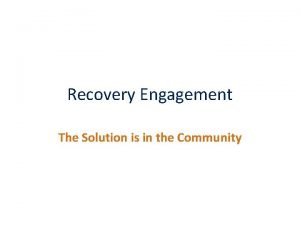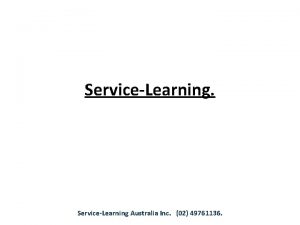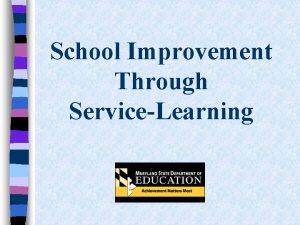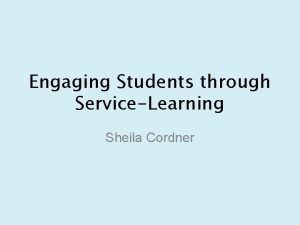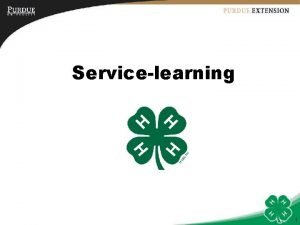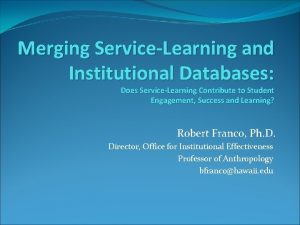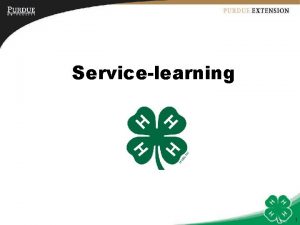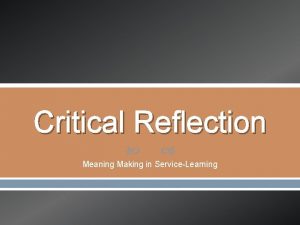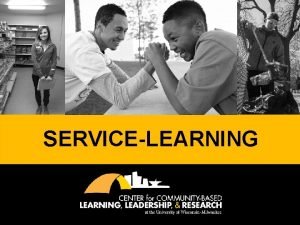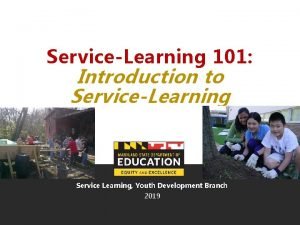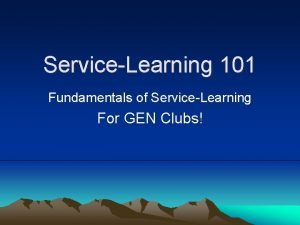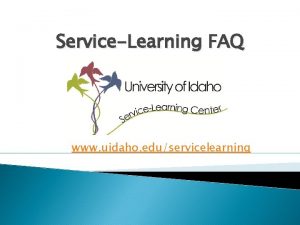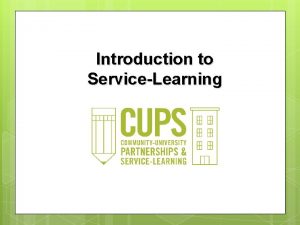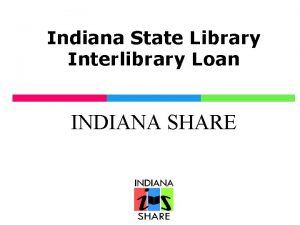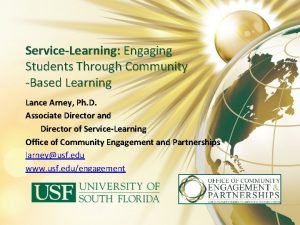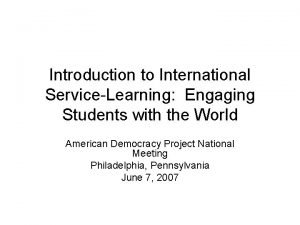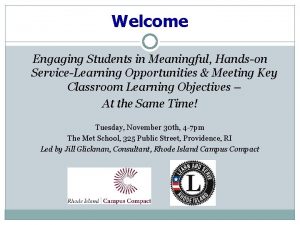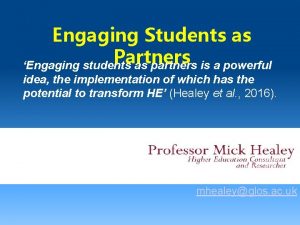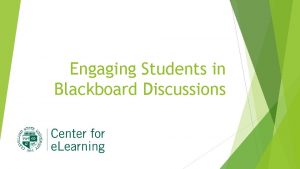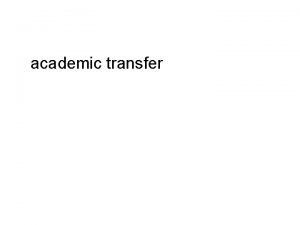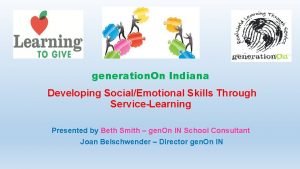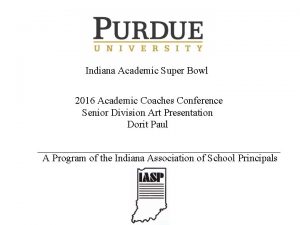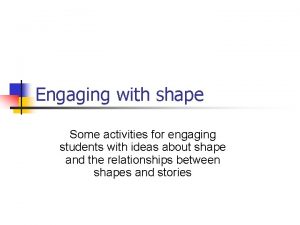ServiceLearning and Indiana Academic Standards Engaging Students and


































- Slides: 34

Service-Learning and Indiana Academic Standards: Engaging Students and Creating Leaders of Tomorrow with a Heart for Others

Resource Introductions • We are a grant funded program facilitated by the IASP (Indiana Association of School Principals) and the IMLEA (Indiana Middle Level Education Association) to support and assist educators and youth development professionals in Indiana with FREE service, service-learning, and philanthropy education lessons and resources from generation. On and Learning to Give. FREE WEBSITE RESOURCES generation. On www. generation. On. org Our vision: A world where all young people have the opportunity to make a positive mark on the world. Our mission: To provide programs and resources that support the development of caring, compassionate and capable kids and teens through service, empowering them to become changemakers in their communities and the world. Learning to Give www. learningtogive. org Our mission is to provide quality, inspirational, and field tested tools to help K-12 teachers educate, equip, and empower their students to be giving and caring citizens. Imagine a world where all youth are knowledgeable and equipped for lifelong engagement in philanthropy as givers of time, talent, and treasure for the common good.

Staff Introductions • Joan Belschwender - Director generation. On@iasp. org • Retired teacher in 2010 – Taught 34 years in MSD Warren Twp. , Indpls. • Beth Smith – Indiana School Consultant • bethsmithgenonin@iasp. org • Teacher for 31 years in private, faith based school; inner city public school; suburban public schools • Team Leader; building autism coordinator; gifted and talented education; special education license; general education license; Teacher of the Year for IPS; State of Indiana Teacher of the Year Finalist • Darlene Short – Teacher Castle North M. S/ Southern IN Field Rep dshort@warrick. k 12. in. us • Jack Birmingham – Asst. Superintendent Union Twp. Schools/ Northern IN Field Rep jbirmingham@union. k 12. in. us • Lisa Crick – Counselor West Noble Elementary/ NE IN Field Rep. lisamcrick@gmail. com • Emily Hatton- Ass’t Principal Highland Middle School/ SE IN Field Rep. emilyhatton 3106@gmail. com • Todd Bess- Executive Director IASP and facilitator • Shirley Wright – Executive Director IMLEA and facilitator and co-coordinator

Why Philanthropy Education • Students exhibit more charitable beliefs, attitudes, and behaviors • Builds ownership and “Why Serve? ” of service-learning • Gives a deeper purpose for learning – students recognize talents and skills to “make a difference” • Increases student motivation to attend school • Improves school culture • Community sees youth as an asset rather than a liability • Practice different habits of life-long philanthropy • Broadens perspectives or career opportunities • Develops critical thinking and leadership

Share these videos! • Here is a GREAT way to introduce your students to the idea of philanthropy and its importance! • What is Philanthropy? This energetic whiteboard video defines, describes, and provides examples of philanthropy and service-learning perfect to educate and inspire any K-12 classroom. • Understanding Advocacy and Action: In this video we provide examples of the power of advocacy and action. By incorporating and infusing philanthropy education and service-learning into regular curriculum students learn there are many ways to make a difference; and that they have the strength and power to give time, talent, or treasure for the common good. • Connecting Skills and Interests to Community Needs: What are your interests and skills? These can be used in meeting community needs as you take action for the common good. • Stages of Service-Learning: Service-learning connects learning to needs in the community. Follow the steps in the process outlined here to make successful plans with your students.

Service, Service-Learning: What is the difference? Service is… volunteer action to meet the needs of others or for the common good. Service-Learning is… a research-based teaching and learning strategy that engages youth in service to meet learning objectives and address real-world issues through service. 6

What are the Benefits of Service-Learning? Students gain • Critical thinking, problem solving, leadership, collaboration, and communication skills • Real world experience linked to academic subjects • Increased self-efficacy as they address community needs Schools gain • Deeper connection between academic knowledge and real-world applications • Increased pro-social behavior and student engagement Communities gain • Opportunities to build positive relationships between community and schools • New generation of caring and experienced citizens with an awareness of key issues

175 and 5: How Does Service-learning Affect Student Performance? Of the 180 instructional days, about FIVE are spent in standardized testing. How can we make the other 175 days more productive and meaningful? Service-learning is an important component in improving academic achievement! • Students who are more civically engaged perform better in reading, mathematics, history, and science and are more apt to complete high school • Low socio-economic students who participate in service-learning scored higher in achievement, motivation, grades, and attendance than their similar peers who had no involvement

Problem Based Learning (PBL) What is PBL? Students work to solve an identified problem and demonstrate their solution to an audience. Students: • Identify the problem through research • Investigate possible solutions • Create a plan of action • Determine criteria for success • Demonstrate results • Reflect on the process and the results

PBL Benefits • Students are challenged to explore real-world issues • Students see the connection between what they are learning and realworld application • Greater student engagement and achievement • Students are actively involved in research and problem-solving • Students are using higher- level critical thinking skills • Students feel a sense of achievement • Students are engaged with community and create community partners • Students develop valuable leadership skills

Universal Design for Learning/ Service. Learning • Representation: UDL offers information in more than one format. Hands-on learning through service-learning projects gives all kids a chance to access academic material in whichever way is best suited to their learning strengths • Action and expression: UDL gives kids more than one way to interact with the material and to show what they’ve learned: oral presentations, group projects, etc. , embedded into their servicelearning projects. • Engagement: UDL looks for different ways to motivate students. Letting kids make choices and giving them assignments that feel relevant to their lives is an important element in UDL and servicelearning.

Service Learning and e. Learning • LTG lessons cross all curricular subjects and areas of study • Lessons can be part of a unit or “stand alone” as one day lessons • Students use technology to research and plan service-learning experiences • Students make a “real-world” connection to their e. Learning • Students experience a greater level of achievement and engagement • Students learn that they can make a difference

Service-Learning and • Service-learning uses the IPARDE process which directly mirrors the Engineering Design Process used in STEM education. • By simply involving students in a service-learning project that employs the IPARDE process, students in ANY content area are engaged in STEM. • LTG lessons cover STEM content and incorporate STEM- related projects

Service-Learning and Indiana Standards • Service-learning is a part of the new Graduation Pathways • Existing content from all disciplines can be tied to service-learning through Learning to Give lessons and projects on generation. On • Educators can utilize lessons to introduce, reinforce, reteach, or expand upon Indiana Standards • Search for lessons can be drilled down to the minutia (6. 2. 1) • www. learningtogive. org/lessons-by-standard

Service Learning and the IEP Service-learning provides: • Opportunities for academic, social, and life skills instruction in a real-world setting • Opportunities for community-based instruction in an inclusive setting • Natural setting for character education and social skills acquisition and practice • Opportunities for functional activities that are inherent in many of the service-learning opportunities: i. e. – a clothing drive allows for students to sort, wash, fold and iron the donated items for distribution • Incorporates and improves technology skills

Community Partners • Assess your current resources- who is already involved/invested • Look for additional resources and take the first step – reach out • Look for long-term relationships and partnerships • Don’t count anyone out • Stress the benefits and the win/win scenario • Be creative and think outside of the box! • Engage students in outreach!

Four Types of Service • Direct Service-Learning: person-to-person, face-to-face service projects in which the students’ service directly impacts individuals who receive the service from the students. • Indirect Service-Learning: Students participate in activities that will help people. They do not work directly with the people. • Research-Based Service-Learning: gathering and presenting information on areas of interest and need–projects that find, gather, and report on information that is needed • Advocacy Service-Learning: educating others about topics of public interest–projects that aim to create awareness and action on some issue that impacts the community.

The Six Steps of Service-Learning * Investigation: Matching student passions and community needs. Preparation: Getting ready for service through learning. Action: Service – Direct, Indirect, Advocacy or Research Reflection: Making meaning through multiple modes. • Used throughout the process Demonstration: Public display of the process and impact of service-learning. Evaluation: Assessing students’ learning and service. There are professional development modules and documents on the website that explain these steps in detail. Downloadable and Printable templates to use with your students. * The IPARDE steps mirror the Engineering Design Process used in STEM. Utilizing the IPARDE steps in any content area engages students in the STEM process. 18

generation. On Online Resources Dashboard – Manage projects and submit reports For Classrooms and Schools- School Directory, Resources for Educators (IPARDE), Links to LTG Projects and Causes – Project Ideation -Search for projects by issue areas or age category Resources – Fact Sheets, Thematic Books, Do Your Own Thing Guides Clubs for Kids and Teens

Learning to Give Online Resources – www. learningtogive. org o Google Search Box on LTG main page - Search over 1700 K-12 philanthropy education lessons o Search Lessons by Key Word, Grade level, Subject, and more filters. o Check out the main page and the 4 main tabs § Teach - Issue Areas, Lessons, Courses for Independent Schools, Youth Activities, Briefing Papers, Literature Guides § Get Started - Teach One, Plan Giving Instruction, Mini Grants, Inspiration, Fisher Online Institute- mini courses § About - Why Philanthropy Education and about LTG § Partners -Resources § Current Events o. Free e-newsletter sign up o. Trending – LTG news o. Create an Account to share your stories with LTG

Nonprofit Meets a Need for Refugees • www. learningtogive. org/resources/nonprofit-meets-need-refugees • What is the need Mr. Kayongo addressed? • In refugee camps, families had to choose between food and soap because $1 for soap was a significant portion of their money. What do you think was the effect of not using soap? • Do you think his solution was simple? What makes it sustainable? • What are some needs you are aware of in your school and community?

Beneficial Bees – Science, LA, Technology (K-12) • Students explore bees as pollinators and learn about reasons their population numbers have been declining in recent years. They write a letter or create a handout to teach others how to help bees through planting native species.

Elementary School Lessons • Animals Matter (Grade 1)- Animal Welfare • Unit: Grow Involved K-2 • Grades: K 1 2 • The students listen and respond to a story about caring and philanthropy related to environmental stewardship and animal welfare.

Investigating Statistics– Sci, Math, LA, Tech, SS (9 -12) • The learners explore a government website to find statistics and facts about unemployment. They look for a correlation between education, income level, and employment. After gathering information, students propose ideas for encouraging people to get further education (or dropout prevention). They choose an audience and a format for sharing statistics in an interesting and motivating way.

Learning to Give Toolkits • • • Disaster Preparation and Response Toolkit Literacy Service-Learning Toolkit. Justice-Related Service-Learning Toolkit Related to the Arts Service-Learning Toolkit for Animal Projects Inter-generational Service-Learning Toolkit Global Issues Service-Learning Toolkit to Grow Kindness Service-Learning Toolkit Related to Health Disability Awareness Environmental Service-Learning Toolkit Refugees in Our Community Service-Learning Toolkit The best service-learning projects are related to instruction, involve student voice and choice, address a researched need, and work with local resources.

LTG Teach. One – Teach one lesson about philanthropy http: //www. learningtogive. org/teachone • With four Teach. One initiatives throughout the calendar year, Learning to Give makes it easy to infuse giving and community into your plans. Choose from four featured lesson plans for each initiative: • Back to School • Giving. Tuesday • Martin Luther King, Jr. Day • Earth Day • one period lesson plans and supporting Power. Point presentation. Each Power. Point is equipped with links to videos, images, and content to support your teaching.

Plan Giving Instruction • Plan Giving Instruction through Your Calendar • Lessons and Teaching Resources by month- A calendar-based menu of resources that aligns philanthropy and service with your content and seasonal planning. Add service to your calendar and maximize teachable moments. August • Introduction to Philanthropy Lessons • Character Education Lessons • Establishing a Culture of Kindness / Anti-Bullying Lessons • Teach. One for Back to School September • September 11 Day of Service and Remembrance • Grandparents Day (September 11) • Citizenship/Constitution Day (September 17)

Current Events From holidays to elections to triumphs to tragedies, there is always something going on that can spark conversations about what we can do as informed, responsible and generous students www. learningtogive. org/teach/current-events • Every day there are opportunities to discuss our role in civil society and decide whether and how to get involved in current events. Involve your students' voice and action to make a difference.

Professional Development on Learning to Give • Earn FREE Professional Development points while learning about philanthropy education and its benefits! https: //www. learningtogive. org/courses • Learn through Mini-Courses at Your Desktop! • The Fisher Educator Mini-Courses provide online professional training in philanthropy education and service-learning. In your own time and at your desktop, learn methods of thoughtful service-learning, history, practice, and benefits of philanthropy. Participants earn certificates that may be applied toward professional CPE credits. • Three types of courses: • Understanding Philanthropy • Service-Learning Practice and Projects • Using Website Resources

Benefits of registering yourself and your school: Register yourself on www. generation. On. org and www. learningtogive. org Register your school on https: //www. generationon. org/app#/add/school Receive generation. On and LTG e-newsletters and monthly updates from gen. On IN with Lesson suggestions and monthly Moments of Service • Access and download anything on the websites. • Eligible for mini grant opportunities • Technical Assistance • Joining your gen. On school account will allow you access to the online Schools Service. Learning Tracker to submit service learning projects, tell your service story, measure impact, and document learning outcomes • Free service-learning PD from our grant funded progam

Mini-grant opportunities • Indiana mini-grants • $250 mini-grants for teachers in Indiana schools to support service-learning projects. • The LIVE LINK to this online application is emailed to you from Joan Belschwender generation. On@iasp. org after you register. You will NOT find this on the generation. On Website -These mini-grants are funded by Lilly Endowment, Inc. and facilitated by IASP. - Mini-grant requirements: - Teacher must be registered on the genon and LTG websites so you are on our database and have a generation. On school account - Use a Learning to Give lesson with the students, - Submit the data from the project on the service- learning tracker on your generation. On school account. - LTG Mini Grants available through their website - Periodic grants opportunities on gen. On

generation. On Website Discovery • www. generation. On. org • Register yourself under JOIN NOW • Check to see if your school is registered (Classrooms and Schools; School Directory- Join School Account • Create a School Account if one does not already exist • Search through the Projects and Causes and RESOURCES • Download the Do Your Own Thing Guide (Resources page 3) • Look at the IPARDE resource (Classrooms and schools) • Organizations and Clubs

Learning to Give Website Discovery • Go to the Learning to Give Website www. learningtogive. org • Create an account • Check out the ISSUE AREAS (Under Teach Tab) • Search for lesson by grade and subject (Under SEARCH) • Search for a lesson by content standard • Check out the Teach. One initiative (Under the Get Started Tab) • Check out the Plan Giving Instruction Calendar (Under Get Started Tab)

Thank you! Contact information: Joan Belschwender : Director, 317 -891 -9900 X 201 generation. On@iasp. org Beth Smith : Consultant 317 -370 -7168 bethsmithgenonin@iasp. org Hope to see YOU Registered Soon !!!
 Fundal level
Fundal level Dynamisch verbinden
Dynamisch verbinden Marketing involve engaging directly with carefully targeted
Marketing involve engaging directly with carefully targeted Marketing involve engaging directly with carefully targeted
Marketing involve engaging directly with carefully targeted Indiana world language standards
Indiana world language standards Indiana 3rd grade math standards
Indiana 3rd grade math standards Idoe mtss
Idoe mtss Indiana ela standards
Indiana ela standards Fair labor standards act indiana
Fair labor standards act indiana Academic success inventory for college students
Academic success inventory for college students Academic standards meaning
Academic standards meaning Pascc
Pascc Academic standards meaning
Academic standards meaning Kentucky writing standards
Kentucky writing standards Colorado academic standards 2020
Colorado academic standards 2020 Kcas standards
Kcas standards Nacada pillars
Nacada pillars Rizal was involved in student demonstration in madrid.
Rizal was involved in student demonstration in madrid. Hard standards and soft standards examples
Hard standards and soft standards examples Indiana jones supply and demand
Indiana jones supply and demand Indiana family and social services administration
Indiana family and social services administration Ctive
Ctive Alcohol and tobacco commission indiana
Alcohol and tobacco commission indiana Indiana gaming commission charity gaming division
Indiana gaming commission charity gaming division Indiana assesment portal
Indiana assesment portal Baton rouge to indianapolis
Baton rouge to indianapolis Indiana medicaid waiver pick list
Indiana medicaid waiver pick list Riverview towers new albany indiana
Riverview towers new albany indiana Bloomington indiana police department
Bloomington indiana police department Schmidt library
Schmidt library East central indiana
East central indiana Indiana state employee benefits
Indiana state employee benefits Injection molding indiana
Injection molding indiana Sociedad indiana
Sociedad indiana Recovery engagement center bloomington indiana
Recovery engagement center bloomington indiana
